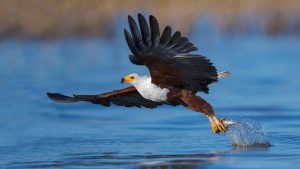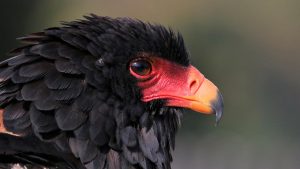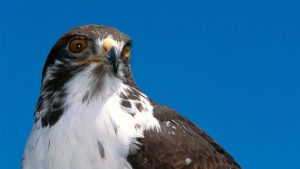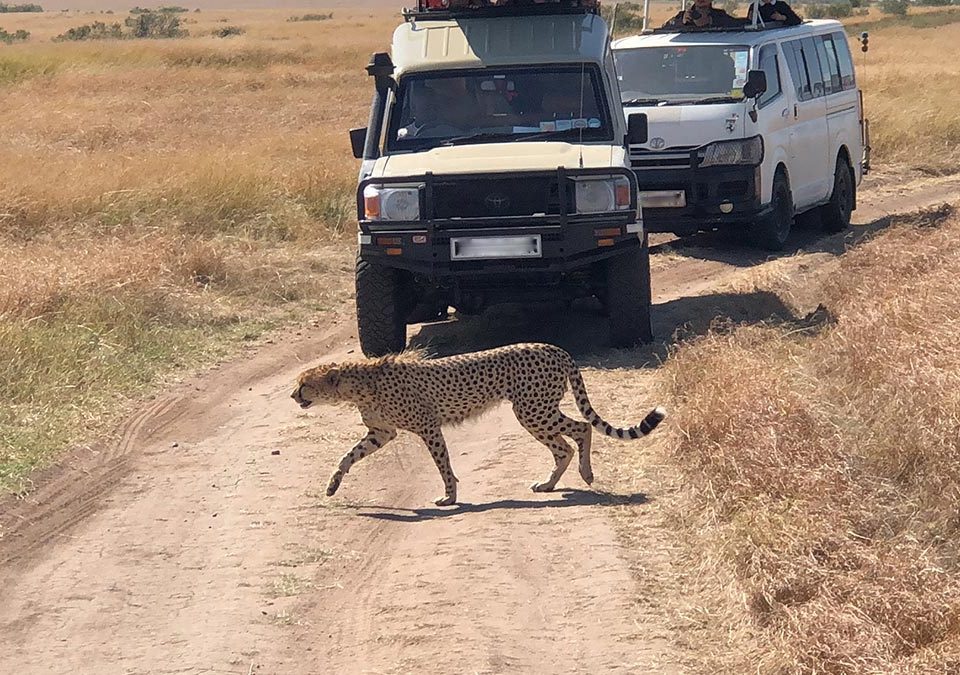Birds of Prey Found in East Africa
East Africa is a go-to for watching birds of prey. Bird watchers from all over the world visit East Africa in search of the region’s 1400 species of birds, an astounding number by any measure that includes birds of every shape and colour imaginable. East Africa has nearly 100 birds of prey species including hawks, eagles, vultures and owls. More than 40 species have been spotted within a single park, making these some of the best places in the world to see an incredible variety of birds of prey.
A bird of prey, predatory bird, or raptor is any of several species of African birds that hunts and feeds on mammals, reptiles, amphibians, insects, rodents as well as other African birds and animals. The term raptor is derived from the Latin word rapere, meaning ‘to seize’ or ‘take by force’. African birds of prey have a keen vision that allows them to detect their prey during flight, as well as powerful talons and beaks. They have very good eyesight for finding food, strong feet for holding food, and a strong curved beak for tearing flesh.
East African Birds of Prey
Let’s take a look at some of the birds of prey you expect to see on your East African Safari;
African Fish Eagle
It is a fairly large eagle, with a distinctive black, brown, and white plumage. It is a replica of the American bald eagle. The eagle is most familiar for its loud, ringing vocalisations that have become known as ‘the voice of Africa.’
Diet: Although, as its name suggests, it feeds extensively on fish, in some areas it preys on flamingoes and other water birds. It is also known to eat carrion and is classified as a kleptoparasite (it steals prey from other birds). Goliath Herons are known to lose a percentage of their catch to Fish Eagles. Their main diet is fish, sometimes dead, but mostly caught live. Catfish and lungfish are caught most frequently. Larger prey are eaten on the ground next to the water.
Behaviour: The African Fish Eagle has two distinct calls. In flight or perched, the sound is something like the American Bald Eagle. When near the nest its call is more of a ‘quock’ sound – the female is a little shriller and less mellow than the male. So well known and clear is the call of this bird that it is often known as ‘the voice of Africa’. The African Fish Eagle is usually seen in pairs inside and outside the breeding season, even sharing kills made by either of them. They spend more time perched than flying, and usually settle for the day by 10am, having made their kill, although they will kill at any time of the day.
Habitat: It is most frequently seen sitting high in a tall tree from where it has a good view of the stretch of river, lakeshore or coastline, which is its territory. Near a lake with an abundant food supply, a pair may require less than a square mile of water to find enough food, whereas next to a small river, they may require a stretch of 15 miles or more. Some tend to move around to avoid the wettest weather, whereas others stay where they are all year round.
Where the African Fish Eagle is found: African Fish Eagles are widespread in Southern Africa. It is particularly common in and around some of the Rift Valley lakes. In Uganda, this bird is a resident on most lakes in Uganda and waterways but you will see it much easier in Mabamba wetland. The Mabamba wetland is well known for other species of birds like the elusive shoebill, papyrus gonolek, swampy hen and herons.
Secretary Bird
The Secretary bird (Sagittaruis Serpentarius) is a bird of prey, but unlike other raptors it has long legs, wings and a tail. The single species of its family, the bird gets its name from its crest of long feathers that look like the quill pens 19th century office workers used to tuck behind their ears. The bird is basically dove-grey in color, with black on the wings, thighs and elongated central tail feathers. The short, down-curved bill is backed by an area of bare, red and yellow skin. In addition, the long legs are feathered half way and have the appearance of breeches. The face is bare and the tail feathers are long and shaggy. Standing up to 4ft tall. It’s tail has two black central streamers. Its most distinctive feature are the 20 black crest feathers, resembling quill pens stuck behind it’s (invisible) ears. The head of the Secretary Bird (with it’s yellowish bare patch) and shape of the beak are very similar to those of the caracara. They also have a very long eyelashes.
Diet: Secretary birds consume snakes, other reptiles, amphibians, tortoises, rats and other small mammals as well as young game birds.
Breeding: Secretary birds pair for life and are remarkably faithful to their nest site. The nest is generally placed low in the fork of a tree, usually an acacia. The huge bundle of sticks grows year by year in the manner of an eagle’s eyrie. The two, occasionally three, rough textured, white eggs take about 50 days to hatch, and the downy young are fed on a diet of small mammals. They fly after about eight weeks. During the breeding season there is aggression between the males within a group. Both sexes work together to build a nest. Eggs are layed in May or June and incubated mainly by the female. The young are fed by both parents.
Behaviour: These birds are basically terrestrial, taking to flight only when hard-pressed. Usually only single birds are found, with members of a pair some distance apart. The Secretary bird walks well on extremely long legs, and a bird may plod up to twenty miles in a day. When pursued, it relies on its speed to escape. It finds most of its food on the ground and has a partiality for snakes. It grabs the snake with its strong toes and beats it to death on the ground, while protecting itself from bites with its large wings. Finally, it seizes its prey and hurls it into the air several times to stun it. In South Africa, these birds are kept in captivity to destroy snakes and rats. In addition to finding food with its beak, the Secretary bird will also stamp on grass tussocks with its feet to scare up lizards, grasshoppers, and small mammals or birds. The basic social structure in Secretary birds is a life-long pair. However, they are not particularly gregarious. In fact, members of a pair are usually not together, but instead stay a small distance apart. When hunting, it spreads its crest feathers like a fan and seeks food with its short hooked beak. The legs are well protected from bites by a layer of thick scales. If pursued, the Secretary Bird relies on the speed of its legs but may spread its wings to aid the running. Secretary Birds spend a great deal of time on the ground walking around and searching for prey. Small animals are simply picked up and swallowed. They are opportunistic birds and gather at recently burnt out areas where prey are often injured and without plant cover. Though not a social bird, they often hunt in small groups or pairs, and keep in contact by hooting.
Habitat: It is found in open areas of plains and savanna country, and often congregates at areas that have been recently burnt, where mammals are deprived of cover and often injured.
Where do we find the secretary birds? The Secretary bird is widespread throughout Africa south of the Sahara. In Uganda you’ll find the Secretary bird mainly inhabiting the savannahs, steppes and plains. You might occasionally find it in very light bushy areas especially in Queen Elizabeth National Park.
White-Backed Vulture
The white-backed vulture (Gyps africanus) is an Old World vulture in the family Accipitridae, which also includes eagles, kites, buzzards and hawks. It is closely related to the European griffon vulture, G. fulvus. Sometimes it is called African white-backed vulture to distinguish it from the Oriental white-backed vulture — nowadays usually called white-rumped vulture — to which it was formerly believed to be closely related.
The white-backed vulture is a typical vulture, with only down feathers on the head and neck, very broad wings and short tail feathers. It has a white neck ruff. The adult’s whitish back contrasts with the otherwise dark plumage. Juveniles are largely dark. This is a medium-sized vulture; its body mass is 4.2 to 7.2 kilograms (9.3–15.9 lb), it is 78 to 98 cm (31 to 39 in) long and has a 1.96 to 2.25 m (6 to 7 ft) wingspan.
Like other vultures it is a scavenger, feeding mostly from carcasses of animals which it finds by soaring over the savannah. It also takes scraps from human habitations. It often moves in flocks. It breeds in trees on the savannah of west and eastern and southern Africa, laying one egg. The population is mostly resident.
This is the Africa’s most common large vulture. It is an accomplished scavenger that feeds on the carcasses of Africa’s large animals like lions, hyenas and jackals. Its plumage is dark brown with black skin on the neck and head, making the white lower-back, for which it is named, even more prominent. The vultures use their sheer numbers to compete for scraps of flesh and bones.
Diet: White-backed vultures are an endangered species, living in a diminishing environment, which results in a decrease in the amount of food available. This increases competition for food, which affects them in two ways. First, the white-backed vulture is not a species that shares food with others of its own species. Second, the white-backs face competition for food with other animals in their habitat.
The main food source of the creature are the carcasses of animals in its habitat. The creature soars over the Savannah and even wooded areas in search of food. It will also follow the water streams during the wet season, an ideal place to find food, as other animals are gathered to get water. Some examples of what a white-backed vulture eat are warthogs, zebras, gazelles, or ostriches, but it will basically feast on the carcass of any animal.
Bateleur Eagle
Bateleur Eagle (Terathopius ecaudatus) is the most famous of the snake eagles. Bateleur is French for ‘tightrope-walker’. This name was chosen because of its distinctive low-flying aerial acrobatics. It is a short-tailed African eagle with a black with ruddy chestnut back, reddish tail, legs, bill, and cheeks, a silver-gray patch at the bend of each wing, and a white undersurface with a black margin along the hind edge of the wing. Unlike most creatures, female Bateleur eagles are larger than males.
Appearance: Its pitch black feathers with white under the wings, bright red face and legs and black beak are characteristic markings. Unlike most creatures, female Bateleur eagles are larger than males. The plumage of a one-year-old bateleur is a uniform dark brown. Around the third year, this plumage starts to turn into adult colors of black, white and grey. It can take an immature Bateleur up to 8 years to shed all their brown plumage and turn in to full adults. The bateleur has exceptionally long wings and a short tail, so that its feet extend beyond the tail in flight. The bateleur’s brown eyes are surrounded by facial skin that is a strikingly bright red, and devoid of feathers. As if to give a sense of artistic balance, the legs are the same brilliant red as the face. The female’s upperwing-coverts are brown, while the secondary flight feathers are mainly grey.Diet
Bateleur eagles spend 8-9 hours each day in the air looking for food. Their diet includes antelope, mice, birds, snakes, carrion, lizards and especially road kills.
Breeding: A female will lay a single egg in a nest that sits in a large tree, which offers protection. Mother incubates the egg while father collects food and sticks for the nest. Sometimes, however, the father incubates. After an incubation period of 52-59 days, the baby Bateleur eagle hatches. 110 days later, the hatchling will leave the nest, but will continue to receive food from its parents for another 100 days. Only 2% of chicks make it to adulthood.
Behaviour: Bateleur eagles pair for life and stay in the same nest for several years. Unpaired adults can sometimes be seen near a nest site. This bird is not rejected by the mating pair and does not help with nesting. The bateleur is most commonly seen in rapid, direct flight which is its preferred method of hunting. Birds may cover 300 miles in up to an eight-hour-long daily searches for food. Due to the extensive area covered each day, the number of eagles in the wild is easily over-estimated in its native sub-Saharan region of Africa, but their numbers in parts of their range are declining. The nuptial aerial display is spectacular, with steep dives by the male at the female. She will roll on her back, presenting her claws and then roll on over to right herself as he hurtles past. There may be follow-the-leader dipping and rolling flight, and there may be 360 degree lateral ‘barrel’ rolls, which is often accompanied by a very loud slapping of the wings together. This percussion can be heard by humans for some great distance. All of this may be accompanied by very loud crowing calls. Bateleurs often sun. They stand upright and hold their wings straight out to the sides and tipped vertically, a classic ‘phoenix’ pose, and they turn to follow the sun.
Habitat: The bateleur ranges over most of Africa south of the Sahara Desert where there is no thick forest. It wants open land – grassland and acacia savannah. It is reduced or extinct in most of its southern African range.
Where the Bateleur Eagles are found: The Bateleur eagle is found throughout Africa south of the Sahara. It prefers tree and bush savanna like in Murchison Falls and Queen Elizabeth National Parks.
Augur Buzzard
The augur buzzard (Buteo augur) is a 55–60 cm long African bird of prey. The taxonomy on this species is confusing, with some taxonomists considering this species, the jackal buzzard, and the Archer’s buzzard to be the same superspecies. Many taxonomists consider them all to be distinct, having different calls, different home ranges and variations in plumage. This is a species of mountains (most typically at about 2000 m altitude, but up to 5000 m), and adjacent savannah and grassland. It is resident and non-migratory throughout its range.
It is perhaps the most common of all birds of prey in the region. They occupy a wide range of wild and cultivated habitats. It is often seen perched in open, on rocks, mounds or trees. It is a large buzzard with short, rounded tail and broad wings, with very broad secondaries. The adult has dark grey, almost black upperparts. The flight feathers are black with pale grey bars mainly on secondaries. The tail is rufous with faint dark grey bars. The underparts are white, including the underwing-coverts, but the carpal patch is black. The flight feathers are white with indistinct black barring and broad black tips. The head is dark grey. They hunt by floating motionlessly in the air then swooping down quickly to catch unwary critters
If you need any information on any particular bird of prey in the region, talk to one of our bird watching consultants. East Africa is where we live and we’ve mastered ground handling over the year. We can as well combine or tailor your safari to include all highlights such as white water rafting, game viewing, gorilla trekking, cultural experiences among others.
Recommended Uganda Safaris
Best of Uganda Tour Holiday in 17 Days














